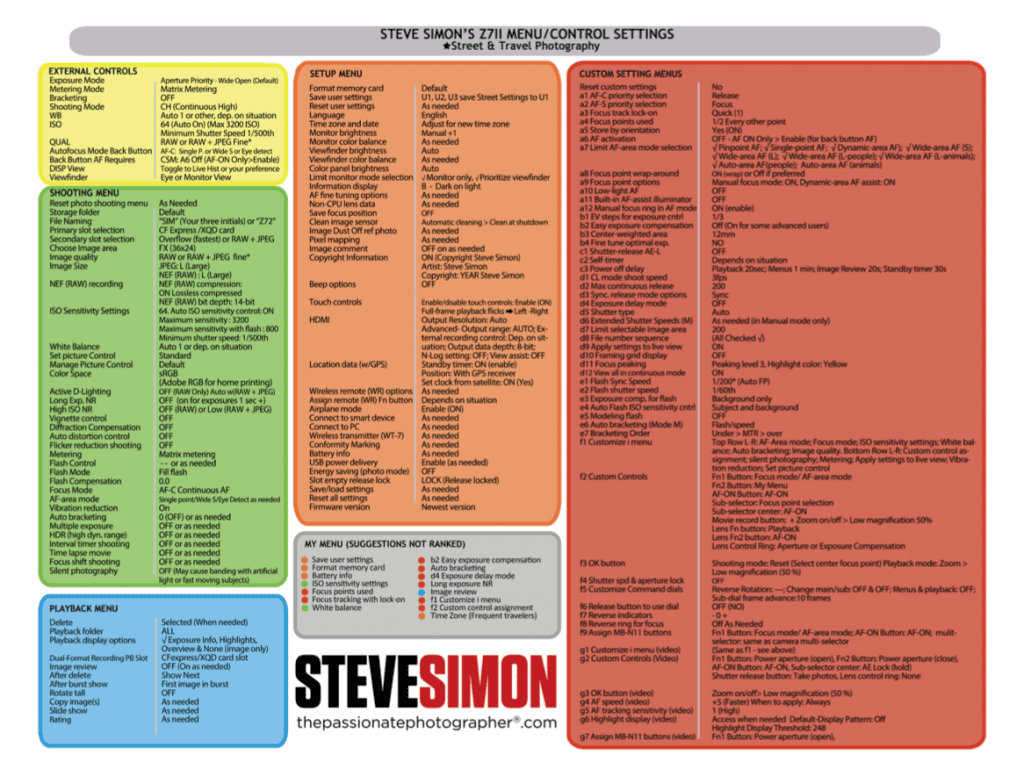It’s here! We’ve been waiting a while and after last week’s announcement, I’ve been scouring the Nikon Z8’s features set and my initial reaction? Well, there’s not much new here.

Don’t take that as a negative reaction mind you, but the rumors of the Z8 being a mini Nikon Z9 were true. In fact, when you examine the feature and tech specs for both cameras there are very few differences— with the obvious ones being size and price. I was hoping for a boost in resolution or some upgrades to the Z9’s AF system in the Z8. But I shouldn’t complain.
The Nikon Z9 is the best camera I have ever used and the Z8 is 30 per cent smaller, $1500 cheaper and considerably lighter (910g vs. 1340g) while including everything I love about the Z9 plus a couple of nuanced updates.
I have owned professional cameras before, (D5, D4, D3 and so on) so the size and weight of the Z9 wasn’t too much of a detraction for me. But like many, I have got used to the smaller footprint of mirrorless bodies and for a street and documentarian, having a smaller camera allows for a lower profile which can result in better pictures.
So let me be more enthusiastic because there are many reasons to be excited. The new Nikon Z8 somehow incorporates most everything from the Z9 in a camera that lets me be more stealthy on the street without the bulk and weight I’m accustomed to with the Z9.
What might you miss from when you put down the Z9 and pick up the 8? Not much. Maybe the built-in GPS or an extra function button or having the second card be an SD instead of dual CF-Express cards. For me, no biggie.
There is no built-in vertical grip and controls but the Z8 has an accessory grip to provide this.
Remember, when the Z9 was finally available a little less than two years ago, more than 45 features were added via firmware. The Z8 has all that great stuff on arrival, shipping May 25th.
If I had to choose one game-changing feature of the Nikon Z9, it would be its remarkable AF-system with subject detect. Nikon says both cameras use the same 45 megapixel stacked sensor and Expeed 7 processor (which is 10 times faster than the processors on the Z7II and Z6II) so the shooting experience should be the same with both cameras. Preliminary buzz is that the Z8 AF system is as fast (or some say maybe even a little faster in some situations).
The Z8 adds dedicated Aircraft detection, silhouette focus and boasts a smaller more accurate face detect, even when a human face takes up as little as 3 per cent of total screen real estate. I expect these new updates will be added to the Z9 in a near future firmware update.
I did not expect the new camera to maintain the super fast frame rates of the Z9 including the astounding pre-burst feature, but it does.
As mentioned, there are two memory card slots behind the sliding card door (which doesn’t lock like on the Z9), one for CF Express (or XQD), the other of SD cards. There’s one less function button on the Z8 and no ethernet port but instead there are two USB-C ports, one to power/charge the camera/battery and the other for tethering or data transfer and you can get an ethernet adapter if you needed one.
A disappointing omission for some will be the lack of built-in GPS as with the Z9. But hey, you can’t have everything in a camera this much smaller and cheaper. I love the audio file capability with the Z9 where I can attach a sound byte to an image easily and it doesn’t look like that is something you can do with the Z8, though they added this feature to the Z6II in firmware and maybe they will do the same with the new camera.
The Nikon Z9’s frame rate dial is gone but the frame rate button is there, allowing you to quickly change all FPS and self timer quickly. Nikon designers moved the White Balance button to the four-button array top left from the bottom back on the Z9.
The Z8 maintains the amazingly bright viewfinder I’ve come to love and the articulating 4-way screen.
The smaller size of the Z8 means the battery source is also smaller and the EN-EL15c battery will likely provide about half the power the Z9’s does. The Z8’s battery size will be familiar to Nikon mirrorless and DSLR users because it’s the same footprint as previous incarnations of this battery but it’s the “c” version that assures you get the maximum power with your Z8.
There’s an optional MB-N12 two-battery grip which can also be used as a battery charger, charging both batteries via a USB-C slot. The Z8 with grip attached is makes the camera bigger than the Z9 which eliminates one of the main reasons for choosing the new camera.
I’m looking forward to putting my Z8 through it’s paces and will keep you apprised on what I discover, though I expect the experience to be fairly seamless coming from the Z9. That is why I have updated the Z9 Bootcamp to become the Nikon Z8 & Z9 Bootcamp where I cover both in the marathon 5.5 hour class making the Nikon Z8 the lead camera for the course.










